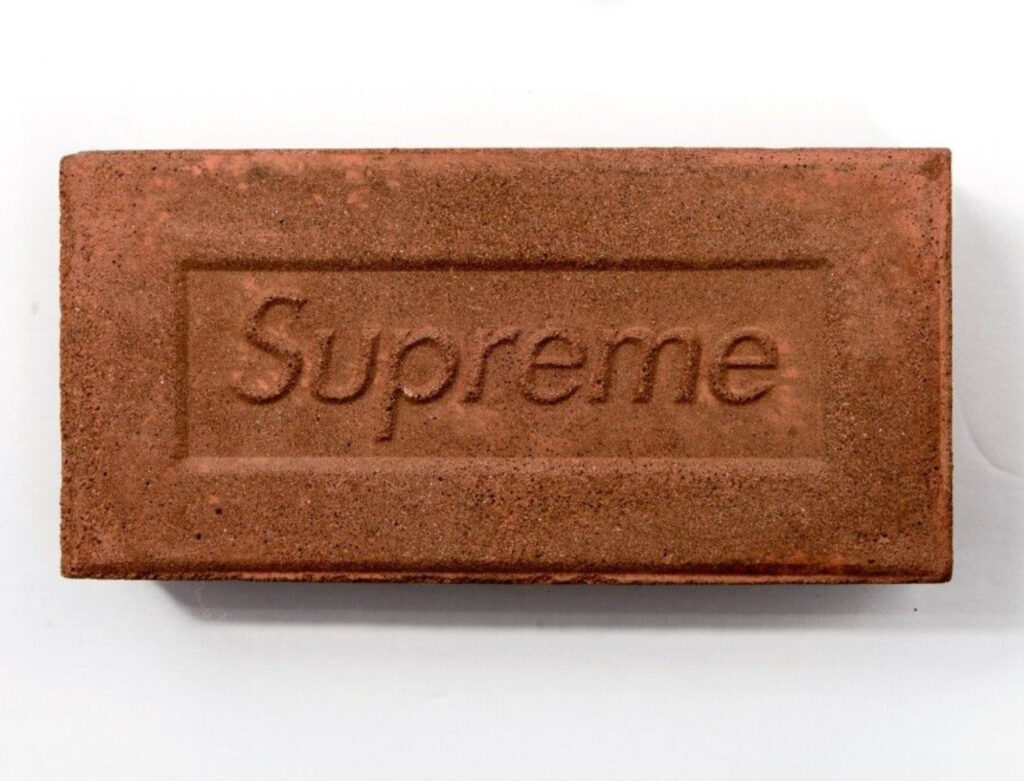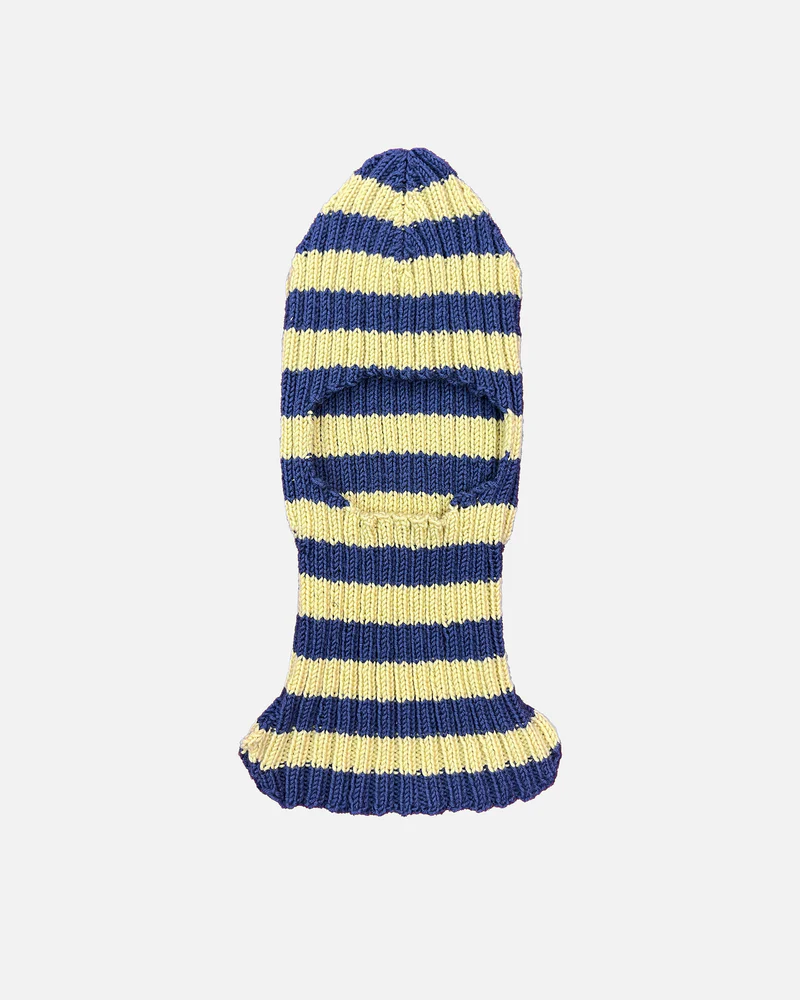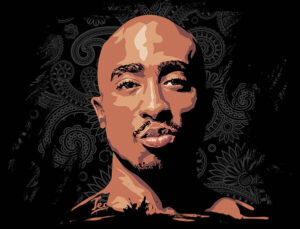On Scarcity, Symbolism, and the End of Functional Design
In 2016, Supreme released an object that would come to define a turning point in streetwear and consumer culture: a standard red clay brick, branded with the Supreme logo. Priced at approximately £30 and selling out almost immediately, the brick became an emblem of something far beyond its material reality. It was not innovative, functional, or aesthetically refined. It was, quite literally, a brick—heavy, inert, and commercially absurd. Yet it captured the attention of global media, collectors, and critics alike, revealing a culture increasingly driven not by product design, but by narrative, scarcity, and symbolic capital.
Traditional design disciplines once prioritized form and function, valuing integrity of material, ergonomic utility, and the direct communication of a product’s purpose. The Supreme brick disrupted these ideals. It did not serve a conventional function, nor did it innovate upon an existing one. Its success rested entirely on the strength of the brand, the exclusivity of the drop, and the cultural momentum that Supreme had cultivated over decades. It was not designed to be used. It was designed to be seen.
This shift marked a broader movement within the fashion and consumer goods sectors—toward a paradigm in which the object itself is secondary to the system it enters. The product becomes a placeholder, a symbol in a larger performative act of identity construction and social signaling. Scarcity, status, and storytelling supersede utility. The brick functioned not as a tool for construction, but as a tool for participation in a lifestyle mythology.
Central to the brick’s significance is the understanding of streetwear as a mode of cultural authorship. Supreme, having built its brand on skate culture, subcultural aesthetics, and limited-run merchandise, had long trained its audience to see value not in the product, but in the drop. The ritual of release, the spectacle of scarcity, the social currency of ownership—these became the primary drivers of desire. The brick was a natural extension of this model. In its absurdity, it reaffirmed the credibility of the brand and the devotion of its consumers.
This evolution coincided with the broader influence of figures such as Virgil Abloh, who elevated the idea of narrative over object, and of cultural citation over formal innovation. Products became vehicles for moodboards, slogans, and interdisciplinary references. In this context, the Supreme brick was not merely a design stunt, but a logical outcome of an aesthetic culture in which meaning is manufactured and distributed at scale through semiotic play.
The brick also participated in a lineage of conceptual gestures traceable to 20th-century art. Marcel Duchamp’s Fountain—a porcelain urinal presented as sculpture—invited viewers to question the nature of art and authorship. Andy Warhol’s Brillo Boxes blurred the boundaries between commercial packaging and gallery object. The Supreme brick, while situated in the realm of consumer goods, echoed these provocations. It did not challenge the marketplace; it capitalized on its fluidity. It asked not whether something could be art or design, but whether something needed to be anything at all to be sold, owned, and mythologized.
The reception of the brick underscored the tension between criticism and complicity. Commentators labeled it a marketing gimmick, a symptom of design’s decline into vacuous branding. Yet in doing so, they participated in the exact discourse the object was engineered to produce. The brick absorbed critique as fuel. It could not be debunked, because it offered no claim beyond its own presence. To object to it was to acknowledge its effectiveness.
The rise of the anti-product—objects that function primarily as cultural symbols rather than functional goods—has since expanded across fashion and adjacent industries. Examples abound: Balenciaga’s intentionally distressed sneakers, MSCHF’s cartoonish Big Red Boots, or Off-White’s quotation-marked accessories. These objects resist practical categorization. They operate instead as conceptual tokens in a network of style, commerce, and commentary. They are built not for use, but for discourse.
Such items reflect a larger cultural condition defined by hyper-awareness, irony, and the collapse of traditional value systems. The marketplace no longer rewards craftsmanship alone. It rewards momentum—the speed at which an item can enter the algorithmic bloodstream of social media and speculation. In this environment, virality is a design material. And absurdity becomes strategy.
The brick also underscored a philosophical pivot in the definition of value. Within older models of luxury, value was conferred through materials, artisanship, and exclusivity tied to heritage. Streetwear disrupted this by creating value through cultural credibility and limited accessibility. The brick was not valuable because it was rare clay or bespoke in form. It was valuable because it was Supreme’s. It entered the world already burdened with context, and that context did the work design once did.
This decoupling of value from material leads to a type of design that is increasingly performative. Products are no longer designed to function—they are designed to signify. This is particularly evident in the resale economy, where Supreme bricks now trade at multiples of their original retail price, not as collectibles with intrinsic worth, but as avatars of a particular cultural moment. The object becomes a vessel for memory, for irony, for allegiance.
Critically, the Supreme brick also represents a cultural turning point. It collapsed the space between merchandise and media. It functioned simultaneously as a product, a meme, a critique, and a collector’s item. It became one of the first items to truly go viral in a way that was structurally engineered from conception. The product was not just meant to sell—it was meant to spread.
Its success set the stage for a new era of drop culture, where brands are expected not just to release goods, but to create events. The notion of “product” becomes inseparable from spectacle. The launch must be shareable. The item must be symbolic. And the community must feel as though it is participating in something larger than a transaction.
What remains after the brick is not a blueprint for form, but a lesson in cultural engineering. Design is no longer confined to the object. It lives in moodboards, social cues, hashtags, lookbooks, and resale forums. It thrives not in the hands of the designer, but in the feedback loop between brand and audience.
The brick will likely be remembered not for its absurdity, but for its clarity. It revealed the transformation of design from an industrial practice into a symbolic economy. It marked the moment when the product ceased to be the center of meaning and became, instead, its residue.
In the end, the brick did not fail design. It exposed its evolution. And in doing so, it offered a starkly unique artifact of a time when form followed feeling—and branding became the new material.
No comments yet.








